Elon Musk Cleverly Dumps Nearly $6B in Tesla Stock
Wall Street's pros expected Tesla's CEO to exit part of his position. Musk turned a routine event into a publicity stunt ... and a savvy tax move.
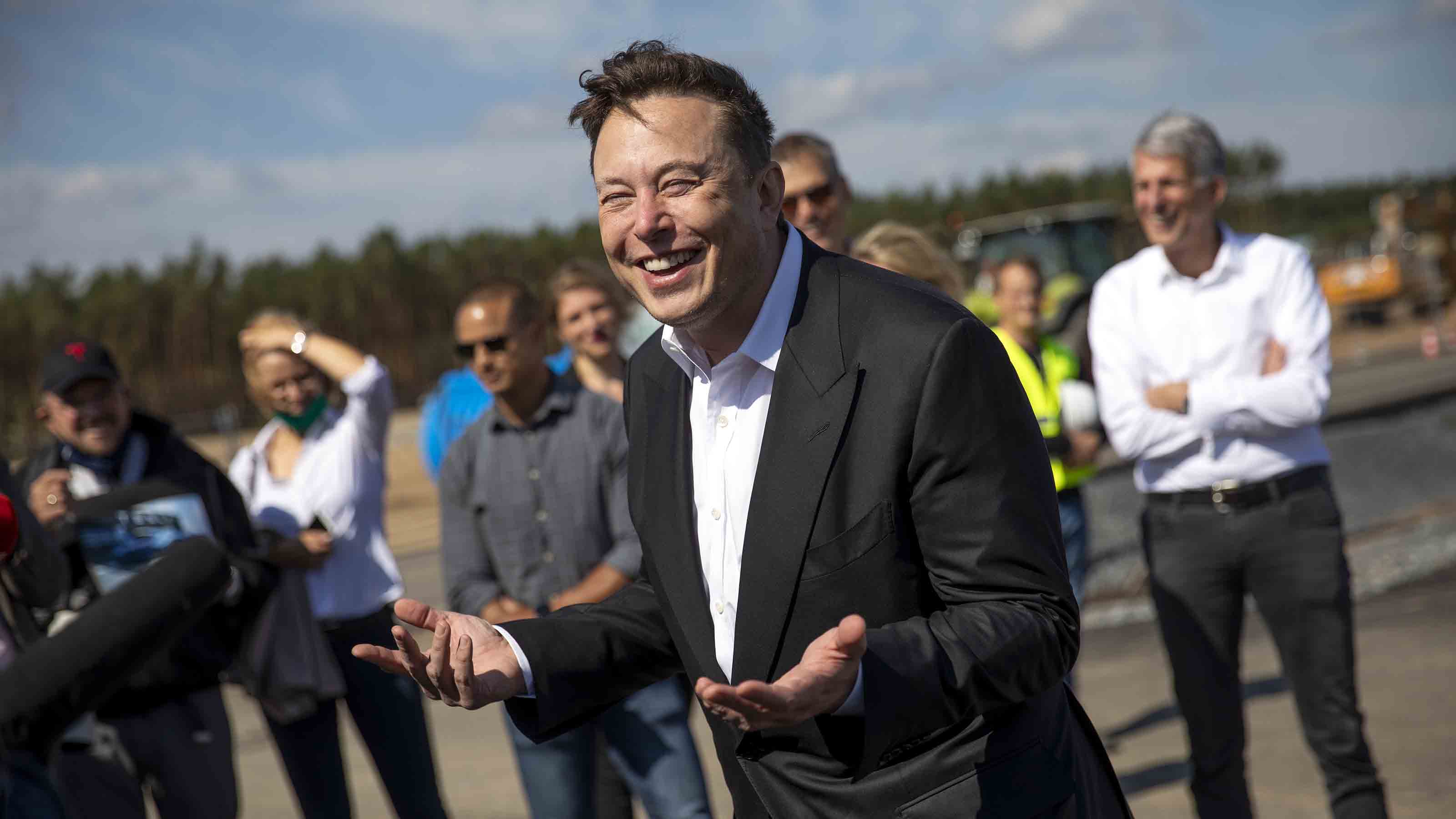

Sure enough, Tesla (TSLA) CEO Elon Musk has sold about $5.8 billion worth of stock in the world's largest automaker by market value so far this week – just days after asking in a Twitter poll whether he should do so.
But it looks like investors can finally stop worrying. After a couple days of deep price declines – likely fueled in part by the mercurial billionaire's sale threats – TSLA stock at least appears to have found its footing.
Given that the electric vehicle stock carries significant weight in scads of basic market-index funds held by most investors, that's an encouraging development.

Sign up for Kiplinger’s Free E-Newsletters
Profit and prosper with the best of expert advice on investing, taxes, retirement, personal finance and more - straight to your e-mail.
Profit and prosper with the best of expert advice - straight to your e-mail.
Musk's Stock Sales Confirmed
Over the weekend, Musk conducted a Twitter poll asking followers whether he should sell 10% of his stake in TSLA stock, and promised to abide by the results of the poll.
The majority – some 3.5 million followers, or 58% – voted "yes."
But it seems likelier than not that the Twitter poll was just a stunt heralding something Musk already had planned.
"Today Musk owns roughly 21% of Tesla and it was viewed by many on the Street that he would sell up to ~5%/6% of his ownership stake before the Twitter poll fiasco began," says Wedbush analyst Daniel Ives.
Either way, Musk made good on his promise. Regulatory filings made public late Wednesday revealed that Musk exercised options Monday and then sold about 2.1 million of the TSLA stock he received to raise $1.1 billion in cash to pay taxes stemming from the transaction.
Interestingly, the option exercise and sales were pursuant to a Rule 10b5-1 trading plan. Insiders are required to adopt such plans so as to not run afoul of the Securities and Exchange Commission. The trading plan was filed with the SEC on Sept. 14, or well before Musk's infamous Twitter poll of Nov. 6.
It's also worth noting that the options were not set to expire until August 2022. Exercising options early is actually a bullish move on Musk's part, notes Barron's Al Root:
"It's important to remember that Musk had no looming bill from the options exercise. The tax is due only when the transaction happens. And Musk exercised the options before he had to, making it a bullish trade in theory.
Exercising options early and holding the stock bought is better, for tax purposes, when an options holder believes a stock is going up. That's because the tax rate on options exercise is the tax rate on ordinary income – and the tax rate on long-term capital gains is lower than the rate on ordinary income."
But let's not digress, because Musk's sale saga hardly ends here.
After exercising options on Monday, Musk undertook a series of sales on Tuesday and Wednesday, per regulatory filings. In those trades, the chief unloaded 3.5 million TSLA shares worth nearly $3.9 billion. Then on Friday, following our original story, new filings showed that Musk unloaded another $687.3 million worth of shares.
These transactions, however, were not made under a Rule 10b5-1 trading plan. That is, they were not scheduled sales.
Shares in Tesla tumbled more than 19% from the close on Friday, Nov. 5 through its intraday low on Wednesday, Nov. 10. Pressure from Musk dumping nearly $5 billion worth of Tesla stock into the market – and the uncertainty created by his Twitter poll asking if he should sell 10% of his total holdings – likely didn't help.
The pain caused by this selloff wasn't limited to holders of TSLA stock. With a market capitalization of more than $1 trillion, Tesla has a great deal of sway in cap-weighted indexes – the S&P 500 and Nasdaq Composite, for example – and scores of exchange-traded funds, such as the Invesco QQQ Trust (QQQ). Tesla has an outsized effect on consumer discretionary funds, as well. For instance, it accounts for more than 19% of the Consumer Discretionary Select Sector SPDR Fund's (XLY) $23 billion-plus in assets.
In other words, even investors who don't hold TSLA stock directly have skin in Musk's game.
Encouragingly, shares in Tesla began to stabilize Wednesday and continued to do so Thursday and Friday.
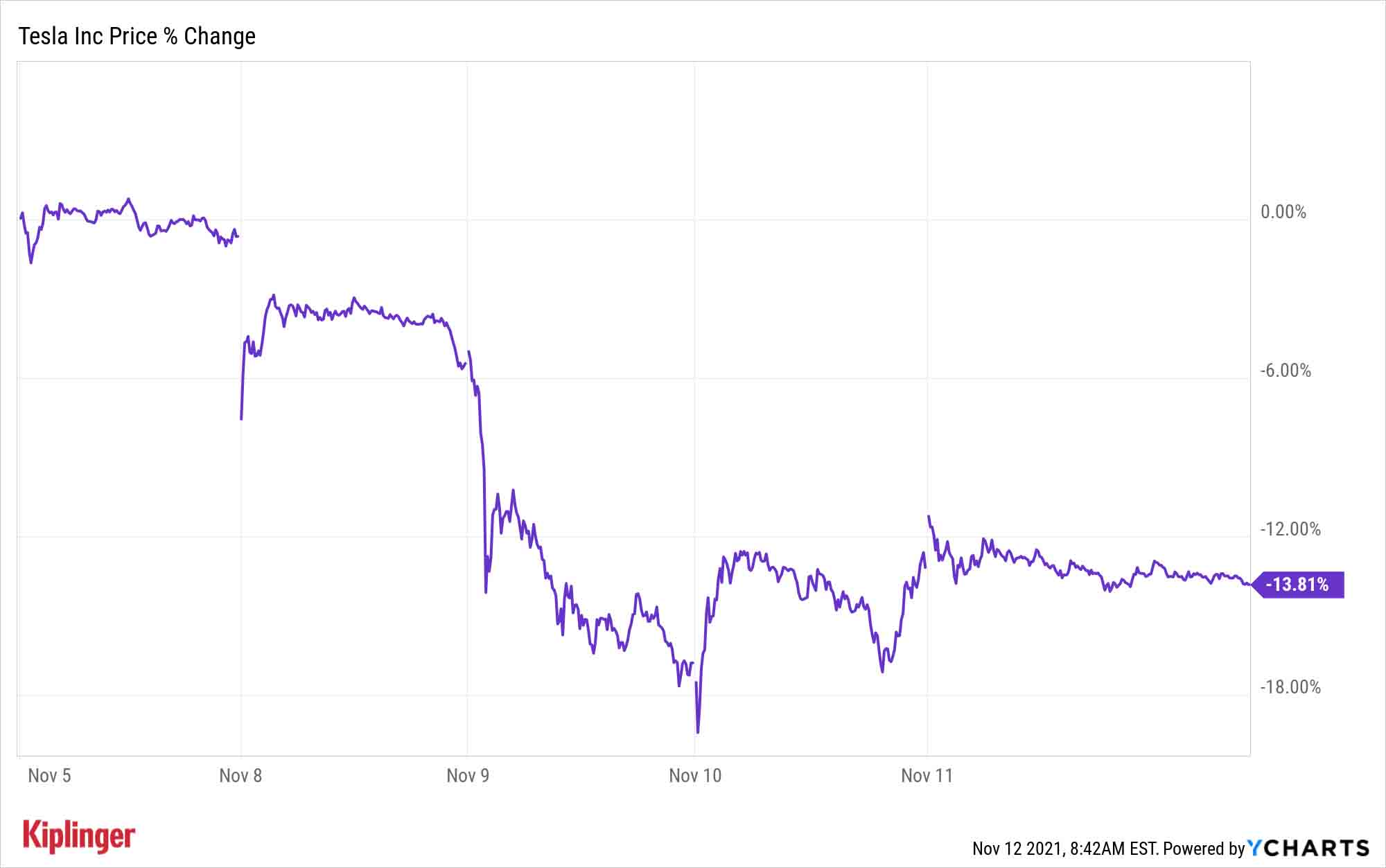
What Now for TSLA Stock?
For those worrying about Musk bailing out on his baby, the world's richest man still holds more than 167 million shares of Tesla stock, or roughly 16% of the electric vehicle maker's shares outstanding. Vanguard is the distant No. 2 shareholder, holding 5.9% of the company's outstanding stock.
Make of that what you will. And to reiterate: Musk's options exercise and sales were planned well in advance of his Twitter stunt – the point of which remains elusive to anyone but the Tesla chief.
To be fair, Musk's quick but precipitous sale of TSLA stock might have been the best course of action for Tesla's CEO.
"With 10% being a higher amount that surprised some investors, ultimately it's a digestible number we are not overly concerned about, although it has given fuel to the bears pressuring the name this week," Ives says. "In a nutshell, we would rather Musk rip the band-aid off now and sell this portion of stock quickly rather than it lingering over the next year and feeding into any non-fundamental bear thesis on the story."
Will Musk make good on selling even more of his stake? That's anyone's guess, but the bullishness he showed by exercising options early suggests it's probably one of his goofs.
The bottom line is there is no bottom line. We can only hope the billionaire feels sated by his latest jape, and whatever whim that follows causes less consternation for both TSLA stock and the broader market.
Get Kiplinger Today newsletter — free
Profit and prosper with the best of Kiplinger's advice on investing, taxes, retirement, personal finance and much more. Delivered daily. Enter your email in the box and click Sign Me Up.

Dan Burrows is Kiplinger's senior investing writer, having joined the publication full time in 2016.
A long-time financial journalist, Dan is a veteran of MarketWatch, CBS MoneyWatch, SmartMoney, InvestorPlace, DailyFinance and other tier 1 national publications. He has written for The Wall Street Journal, Bloomberg and Consumer Reports and his stories have appeared in the New York Daily News, the San Jose Mercury News and Investor's Business Daily, among many other outlets. As a senior writer at AOL's DailyFinance, Dan reported market news from the floor of the New York Stock Exchange.
Once upon a time – before his days as a financial reporter and assistant financial editor at legendary fashion trade paper Women's Wear Daily – Dan worked for Spy magazine, scribbled away at Time Inc. and contributed to Maxim magazine back when lad mags were a thing. He's also written for Esquire magazine's Dubious Achievements Awards.
In his current role at Kiplinger, Dan writes about markets and macroeconomics.
Dan holds a bachelor's degree from Oberlin College and a master's degree from Columbia University.
Disclosure: Dan does not trade individual stocks or securities. He is eternally long the U.S equity market, primarily through tax-advantaged accounts.
-
 Two Don'ts and Four Dos During Trump's Trade War
Two Don'ts and Four Dos During Trump's Trade WarThe financial rules have changed now that tariffs have disrupted the markets and created economic uncertainty. What can you do? (And what shouldn't you do?)
By Maggie Kulyk, CRPC®, CSRIC™
-
 I'm Single, With No Kids: Why Do I Need an Estate Plan?
I'm Single, With No Kids: Why Do I Need an Estate Plan?Unless you have a plan in place, guess who might be making all the decisions about your prized possessions, or even your health care: a court.
By Cynthia Pruemm, Investment Adviser Representative
-
 Stock Market Today: Tariff Talks Drive Another Up-and-Down Day
Stock Market Today: Tariff Talks Drive Another Up-and-Down DayTrade war negotiations are happening, but the "fear gauge" is gyrating, and investors, traders and speculators are still searching for signs of a bottom.
By David Dittman
-
 Stock Market Today: Dow Drops Another 2,231 Points to Hit a Correction
Stock Market Today: Dow Drops Another 2,231 Points to Hit a CorrectionThe Nasdaq Composite, meanwhile, entered a new bear market with its latest slide.
By Karee Venema
-
 Stock Market Today: Dow Dives 1,679 Points on Trump Tariff Shock
Stock Market Today: Dow Dives 1,679 Points on Trump Tariff ShockU.S. stocks lost roughly $3.1 trillion in market cap on Thursday – the biggest one-day decline since the start of the COVID-19 pandemic in March 2020.
By Karee Venema
-
 The Stock Market Is Selling Off. Here's What Investors Should Do
The Stock Market Is Selling Off. Here's What Investors Should DoInvestors started fleeing the equities market en masse in response to the Trump administration's "jaw-dropping" tariffs. But the experts say don't panic.
By Karee Venema
-
 Stock Market Today: It's the Old Up-Down Again on Liberation Day
Stock Market Today: It's the Old Up-Down Again on Liberation DayMarkets look forward to what comes with the reordering of 80-year-old global trade relationships.
By David Dittman
-
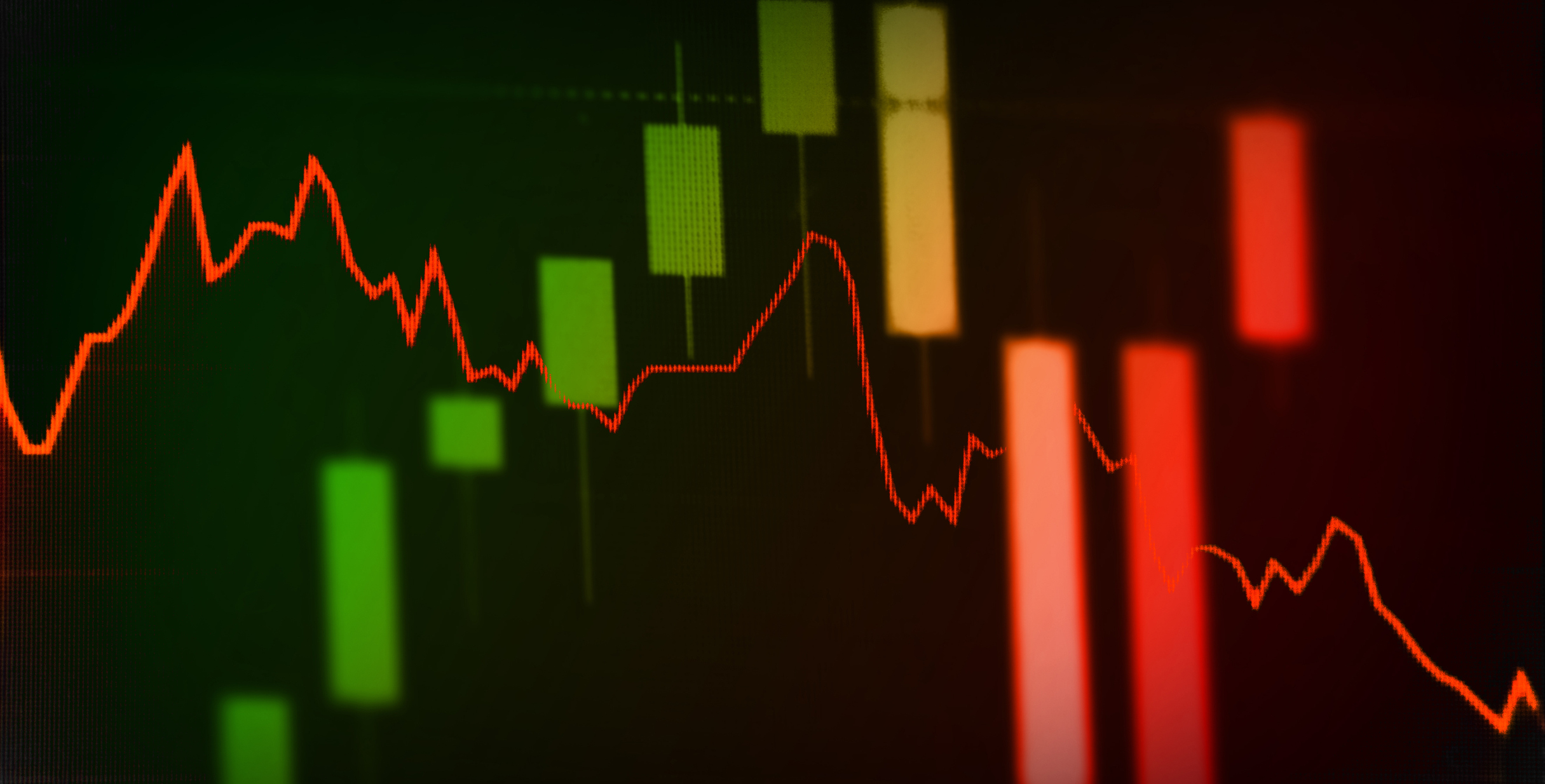 Stock Market Today: Stocks Are Mixed Before Liberation Day
Stock Market Today: Stocks Are Mixed Before Liberation DayMarkets are getting into the freewheeling rhythm of a second Trump administration.
By David Dittman
-
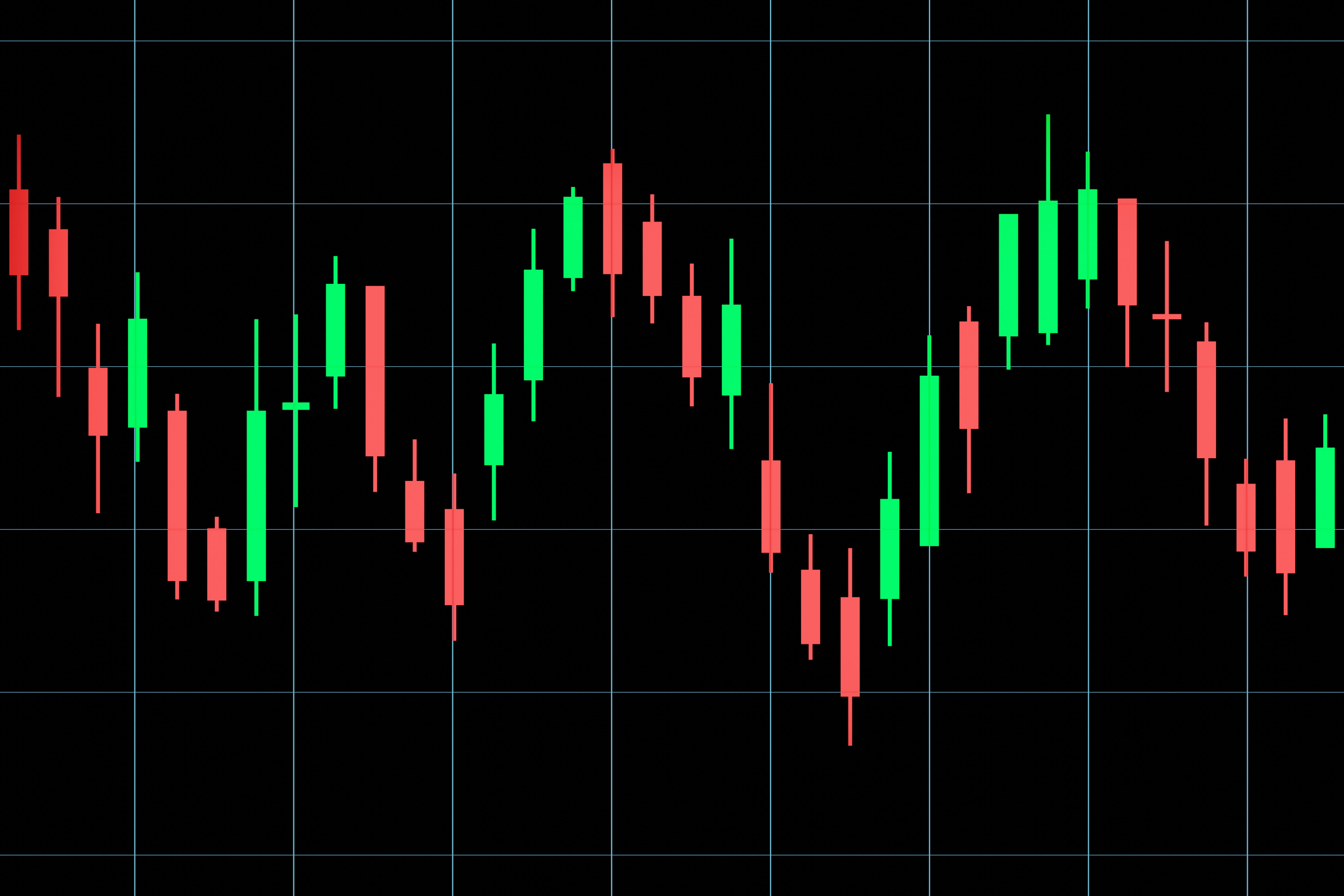 Stock Market Today: It's Going to Stay Choppy for Stocks
Stock Market Today: It's Going to Stay Choppy for StocksAuto-focus can show us a lot about uncertainty on the ground and in the stock market.
By David Dittman
-
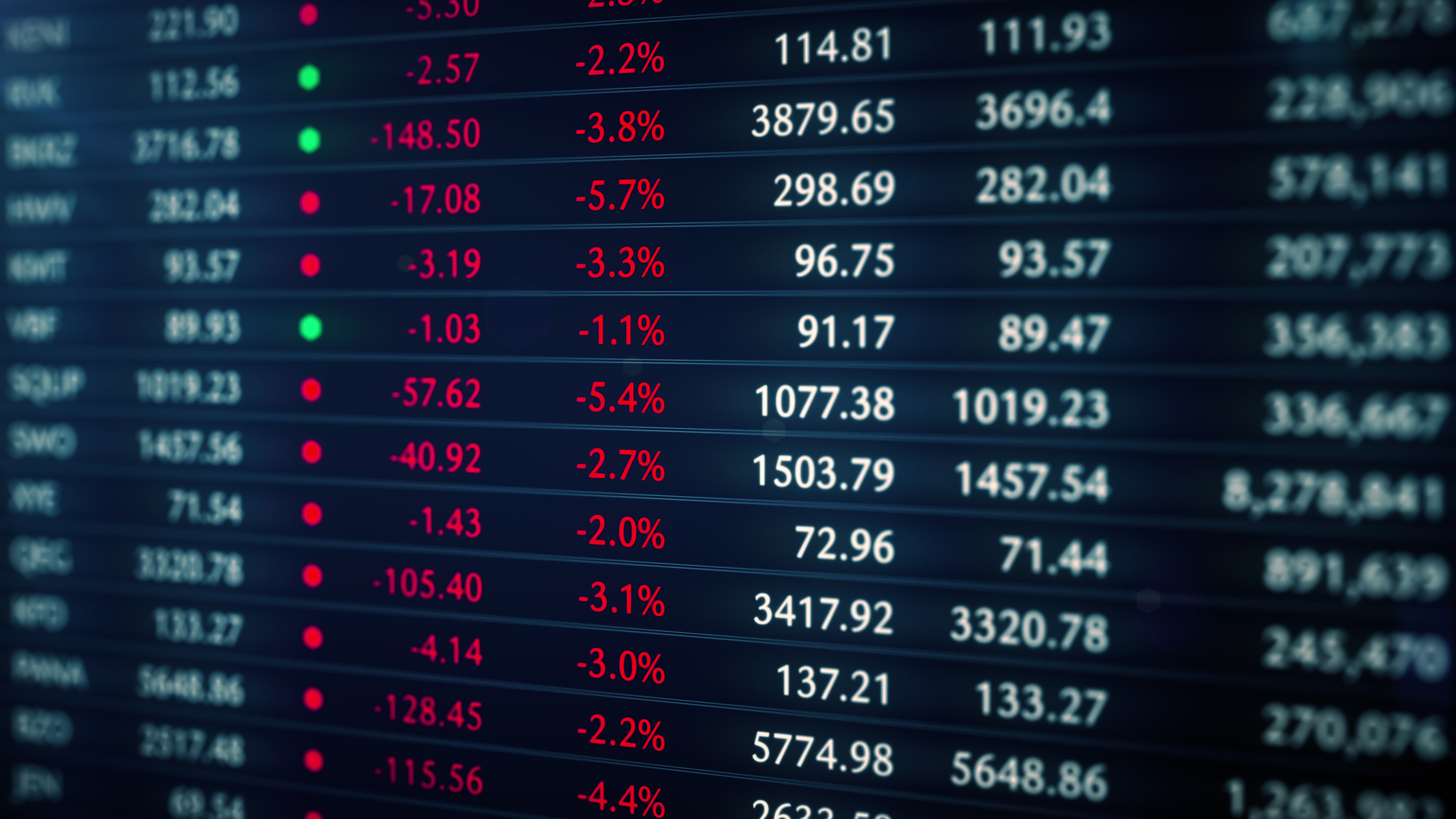 Stock Market Today: Auto Tariffs Send Stocks Lower
Stock Market Today: Auto Tariffs Send Stocks LowerThe main indexes snapped their win streaks after the White House confirmed President Trump will talk about auto tariffs after the close.
By Karee Venema